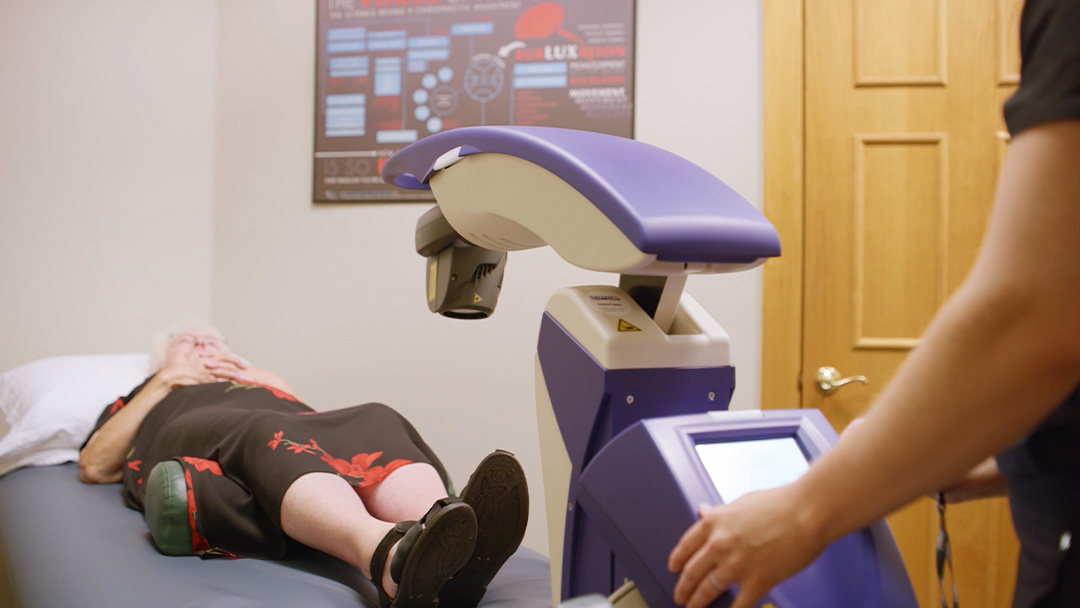
Spinal Decompression vs. Chiropractic Treatment for Back Pain

Back pain is a common ailment that affects millions of people daily. Whether due to poor posture, injury, or degenerative conditions, finding relief is a priority. That’s why we recommend scheduling a consultation with our spinal decompression doctors in Grand Rapids, MI.
Two popular options for back pain treatment are spinal decompression and chiropractic care. Understanding the differences between these approaches can help you make an informed decision about which treatment might be best for you.
What is Spinal Decompression?
Spinal decompression is a non-surgical treatment aimed at relieving back pain by gently stretching the spine. This process creates negative pressure within the spinal discs, allowing herniated or bulging discs to retract and relieve pressure on nerves. The result is improved circulation to the affected area, which can promote healing and reduce pain.
This treatment is particularly effective for those suffering from conditions like herniated discs. Spinal decompression therapy usually involves several sessions, where patients lie on a motorized table that applies controlled traction to the spine.
What is Chiropractic Treatment?
Chiropractic treatment involves hands-on manipulation of the spine to restore proper alignment and function. Chiropractors use techniques such as spinal adjustments, mobilizations, and soft tissue therapies to alleviate pain, improve mobility, and enhance overall spinal health.
is commonly used to treat various types of back pain, including pain caused by muscle tension, joint dysfunction, and misalignments in the spine. In addition to spinal adjustments, chiropractors often provide lifestyle advice, exercise recommendations, and other therapies to support long-term wellness.
Spinal Decompression vs. Chiropractic Treatment
Take the first step toward a pain-free life! Whether you choose , chiropractic care, or a combination of both, the right approach can make all the difference in your recovery journey.
Focus and Approach
Spinal decompression specifically targets the spinal discs, using mechanical traction to relieve pressure. Chiropractic care, on the other hand, focuses on the overall alignment and function of the spine through manual adjustments.
Conditions Treated
While both treatments can address back pain, spinal decompression is particularly effective for conditions like herniated discs and sciatica. Chiropractic care is more versatile, treating a wider range of musculoskeletal issues, including muscle tension and joint dysfunction.
Treatment Duration
Spinal decompression usually requires multiple sessions over a few weeks or months. Chiropractic care can also involve ongoing treatments but may vary more in frequency based on individual needs.
Patient Experience
Spinal decompression is a passive treatment, meaning you lie on a table and let the machine do the work. Chiropractic treatment is more hands-on, involving adjustments and manipulations performed by the chiropractor.
Which Treatment is Right for You?
Choosing between spinal decompression therapy and chiropractic treatment depends on the underlying cause of your back pain, your personal preferences, and your health goals. If your pain is primarily related to spinal disc issues, spinal decompression may offer the most direct relief. However, if you seek a broader approach to spinal health, chiropractic care might be the better option.
Schedule a Consultation for Back Pain
At Harrison Integrative Wellness Center, we offer both treatments and can help you determine the best course of action based on your specific condition. Our spinal decompression doctors in Grand Rapids, MI, are dedicated to providing personalized care to help you achieve long-term relief from back pain. To get started, call (616) 363-0902 or request an appointment online.

